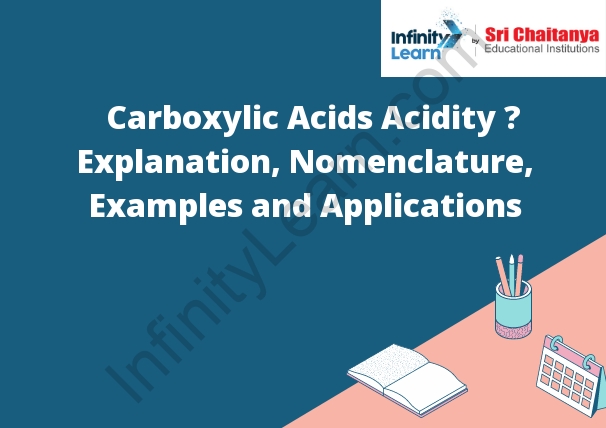Table of Contents
What is Carboxylic Acid?
A carboxylic acid is an organic compound that contains a carboxyl group (COOH). This functional group consists of a carbon atom double-bonded to an oxygen atom and single-bonded to a hydrogen atom. Carboxylic acids are relatively weak acids and are widely used in organic chemistry.

Carboxylic Acids – Acidity
The carboxylic acids are a large group of organic molecules that share a common functional group, the carboxyl group (-COOH). This group is made up of a carbon atom double-bonded to an oxygen atom and single-bonded to a hydroxyl group. Carboxylic acids are very acidic, meaning they donate protons (H+) easily. This makes them useful in organic chemistry, as they can be used to create new molecules by removing protons from other molecules.
Acidity of Carboxylic Acids and Its Derivatives
The acidity of a carboxylic acid is determined by the stability of the carboxylate anion. The more stable the anion, the more acidic the acid. The acidity of a carboxylic acid is also affected by the electron-withdrawing ability of the substituents on the carbon atom adjacent to the carboxylate group. The more electron-withdrawing groups the substituent has, the more acidic the acid will be.
The Acidity of Carboxylic Acid
A carboxylic acid is a molecule that has a carboxyl group (COOH) attached to a carbon atom. A carboxyl group is a functional group that consists of a carbon atom double-bonded to an oxygen atom and single-bonded to a hydrogen atom.
Carboxylic acids are very acidic. This is because the carboxyl group is able to donate a proton (H+) to other molecules. This makes carboxylic acids very good at neutralizing bases.
Nomenclature and Examples of Pesticides
Insecticides
Insecticides are chemicals that kill or control insects.
Examples:
malathion
carbaryl
pyrethrum
herbicides
Herbicides are chemicals that kill or control plants.
Examples:
glyphosate
2,4-D
atrazine
Applications of Carboxylic Acids
Carboxylic acids have a wide range of applications. Some of the most common applications are listed below.
1. Carboxylic acids are used to produce plastics.
2. Carboxylic acids are used to produce pharmaceuticals.
3. Carboxylic acids are used to produce detergents.
4. Carboxylic acids are used to produce cosmetics.
5. Carboxylic acids are used to produce food additives.









